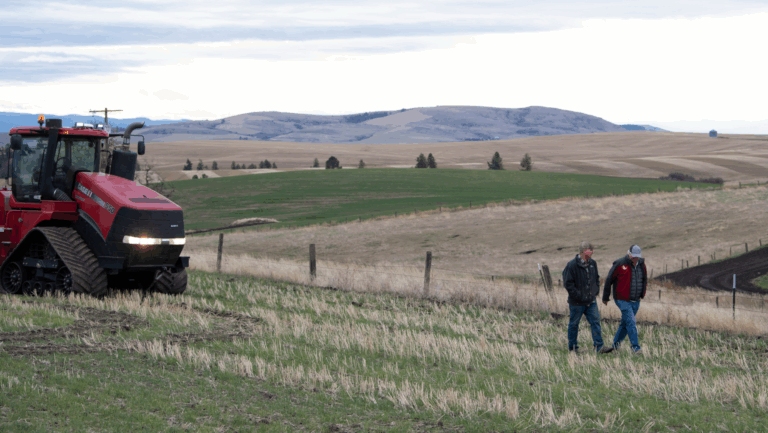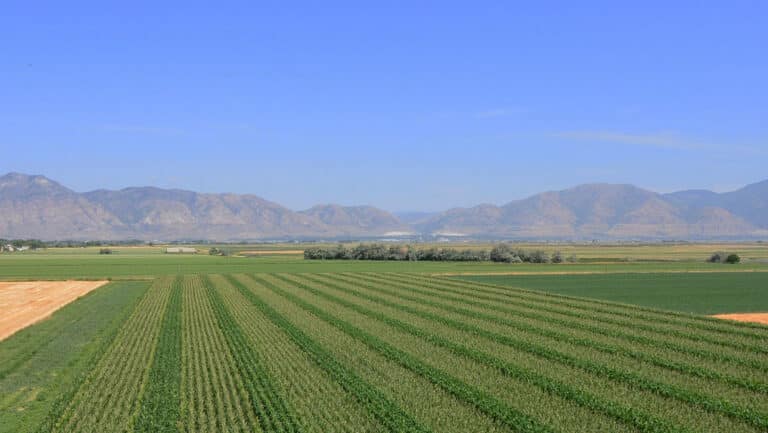U.S. Farmland Market Outlook for 2024
The U.S. farmland market has remained remarkably resilient for the last several decades—but will it last?
As COVID-era funding runs out and input costs continue to rise, farm income is expected to fall 22 percent in 2023.
Even so, it’s important to understand that farm liquidity remains strong and net farm income will still remain well above the 10-year average. But with fewer government payments and a softening commodity market, landowners might be wondering what this means for the future of farmland prices and cash rents.
Keep reading to learn more about the top three factors influencing the farmland market and what they mean for landowners as they plan for 2024.
1. Net Farm Income
After a record-breaking high in 2022, net farm income is expected to fall a total of $41.7 billion to $140.4 billion, due largely to lower commodity prices, a decline in government payments, and elevated input costs.

The decline in farm income is to be expected as COVID-era funding halts and commodity markets come off a period of historic highs. “The projections are a reminder that 2022 was an anomaly. It should not be a surprise that income drops in 2023 and 2024 as some of those temporary factors fade,” said FAPRI director Pat Westhoff.
What this means for farmers: The last few years were record-breaking, but the income farmers saw in 2022 is beginning to decline. Don’t let the drop in farm income discourage you—farmland is still a valuable asset. Strong liquidity combined with rising farmland values has empowered farmers with capital and equity to offset the effects of a softening market.
2. Cash Rents
In general, cash rents rise when farmland values rise. However, there is often a delay in that increase.
In 2021 and 2022, farmland values increased. In response to this, cash rents increased to an average of $307 per acre in 2023, increasing as much as 5.8% in the Corn Belt. Although net income was strong thanks to high commodity prices, landowners still earned higher returns from renting their land versus farming it in 2023.
What this means for farmers: Heading into 2024, the outlook is mixed. Most appraisers and managers anticipate a slight increase in cash rents of less than five percent. A softening in commodity prices could lead to a slight downward adjustment to some cash rents in 2024, but historical trends suggest this is unlikely.
3. Interest Rates
It’s no secret that interest rates have hit a 22-year record high. The Federal Reserve has enacted 11 rate hikes this cycle with potentially one more to come before the end of 2023. Historically, farm real estate values rise more quickly when interest rates are lower. However, when interest rates are as high as they are now, farmland still tends to increase but at a slower pace, rather than falling into a decline. That stability makes farmland a valuable asset even in times of rising interest rates.
This high-rate environment won’t last forever. “There are elevated expectations for a bullish slowdown where the economy slows enough to bring down inflation but not enough to trigger a recession,” said Richard Saperstein, chief investment officer at Treasury Partners. In the coming years, the FOMC projects the federal fund rate will fall to an average of 3.9% in 2025 and 2.9% in 2026.
What this means for farmers: The equity you own in your farmland is a dependable source of collateral you can use to access capital when you need it, regardless of the rate environment. But it’s important to monitor fluctuating rates, particularly if you have a floating rate, and adjust your balance sheet as needed to take changing interest expenses into account.
What Should Farmers Expect as the Farmland Market Softens?
In 2023, cropland values are anticipated to rise 8.1 percent and ranchland values 6.7 percent. It’s unlikely that we will continue to see large increases, but most experts agree that the farmland market will remain relatively unchanged in 2024. While landowners may not see the leaps in value that they have seen over the past three years, experts agree that a decline in land values is unlikely.
Bottom line: Farmland is a stable and attractive asset as the market begins to decline. Landowners can use their equity as collateral to gain access to operational capital or to purchase new land.
Get Unparalleled Agricultural Finance Insights
AgAmerica offers a range of flexible financing options that can be tailored to fit the evolving needs of farmers, ranchers, and rural landowners nationwide. Whether you’re buying land, exploring new opportunities, planning for your family’s future, or investing in a stable and secure asset, AgAmerica is the go-to place for expert financial guidance.
Download the full 2023 Farmland Market Report to unlock even more insight into the future of farmland values.






